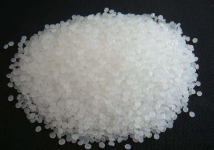read: 666 time:2025-07-03 10:57:23 from:化易天下
Pyridine is a heterocyclic aromatic compound that plays a significant role in organic chemistry due to its basic nature. Understanding why pyridine is basic in nature is essential for various applications, ranging from industrial processes to pharmaceutical synthesis. This article will explore the chemical structure of pyridine, its electron configuration, and the factors that contribute to its basicity.
Pyridine has a six-membered ring structure, similar to benzene, but with one of the carbon atoms replaced by a nitrogen atom. This nitrogen atom is the key to understanding why pyridine is basic in nature. The nitrogen atom in pyridine is sp2 hybridized, meaning it has three sp2 hybrid orbitals that form sigma bonds with adjacent carbon atoms and one unhybridized p orbital that houses a lone pair of electrons.
The lone pair of electrons on the nitrogen atom in pyridine is crucial for its basicity. Unlike in other nitrogen-containing aromatic compounds, such as pyrrole, the lone pair of electrons in pyridine is not involved in the aromatic π-system. This makes these electrons readily available to accept a proton (H+), which is the defining characteristic of a base according to the Brønsted-Lowry theory. Therefore, the presence of a non-bonding lone pair of electrons on nitrogen is a primary reason why pyridine is basic in nature.
When comparing pyridine to other aromatic amines, such as aniline, the basicity of pyridine stands out. In aniline, the lone pair of electrons on the nitrogen is partially delocalized into the benzene ring, reducing its availability to accept protons. However, in pyridine, the lone pair remains localized on the nitrogen atom, making it more basic. This comparison further illustrates why pyridine is basic in nature, as the electron density around the nitrogen atom is higher, enhancing its ability to act as a base.
Pyridine's aromaticity also plays a role in its basicity. The nitrogen atom contributes to the aromatic stability of the ring without sacrificing its ability to accept a proton. The aromatic ring structure stabilizes the molecule after protonation, making it energetically favorable for pyridine to act as a base. This aspect of aromaticity is another reason why pyridine is basic in nature, as it supports the nitrogen's role in proton acceptance while maintaining the stability of the molecule.
The basicity of pyridine has significant implications in both laboratory and industrial settings. Pyridine is commonly used as a base in organic synthesis, particularly in reactions involving nucleophilic substitution and as a catalyst in various chemical processes. Its ability to accept protons makes it a versatile compound in creating salts, coordination complexes, and other derivatives.
In summary, the question of "why pyridine is basic in nature" can be answered by examining its molecular structure, the availability of the lone pair of electrons on nitrogen, and the influence of aromaticity. Pyridine's basicity is primarily due to the lone pair of electrons on its nitrogen atom, which is not involved in the aromatic system, making it readily available for protonation. Understanding these factors is essential for leveraging pyridine's properties in various chemical applications.

Jincheng Petrochemical's 300000 ton polypropylene plant successfully trial production, 2024 polypropylene market analysis

The ABS market remains sluggish, what is the future direction?

Market differentiation of bisphenol A intensifies: prices rise in East China, while prices generally decline in other regions

The production method and process flow of silicone acrylic lotion, and what are the common raw materials